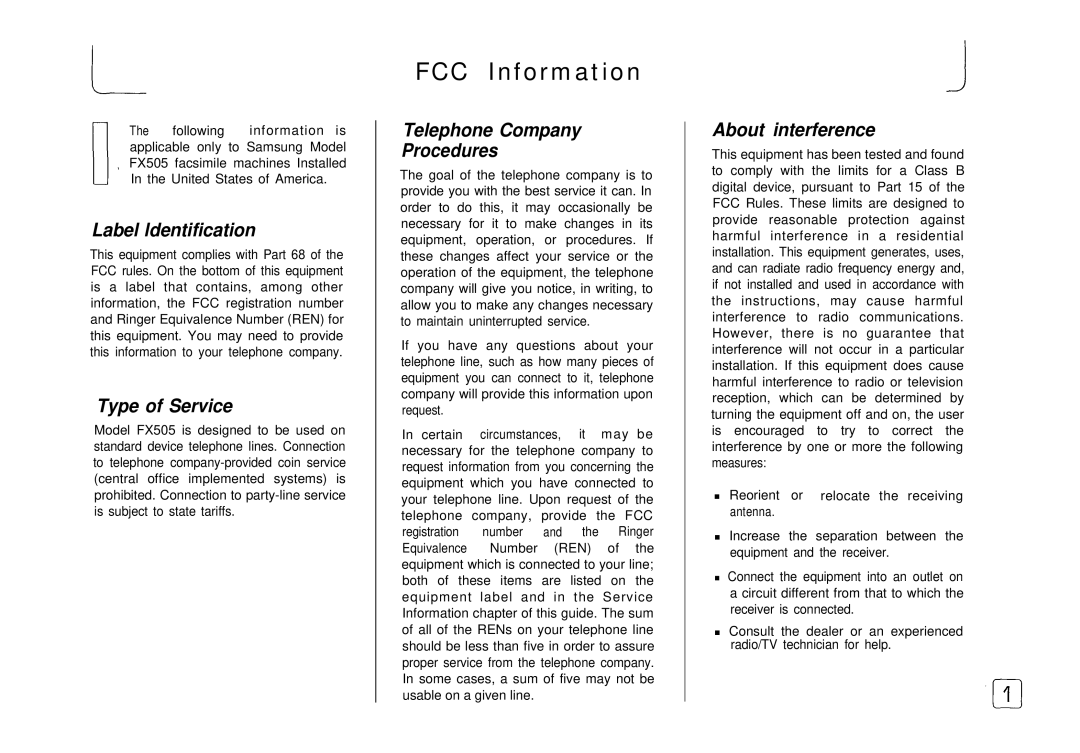
The following information is applicable only to Samsung Model FX505 facsimile machines Installed In the United States of America.
Label ldentification
This equipment complies with Part 68 of the FCC rules. On the bottom of this equipment is a label that contains, among other information, the FCC registration number and Ringer Equivalence Number (REN) for this equipment. You may need to provide this information to your telephone company.
Type of Service
Model FX505 is designed to be used on standard device telephone lines. Connection to telephone
FCC Information
Telephone Company
Procedures
The goal of the telephone company is to provide you with the best service it can. In order to do this, it may occasionally be necessary for it to make changes in its equipment, operation, or procedures. If these changes affect your service or the operation of the equipment, the telephone company will give you notice, in writing, to allow you to make any changes necessary to maintain uninterrupted service.
If you have any questions about your telephone line, such as how many pieces of equipment you can connect to it, telephone company will provide this information upon request.
In certain circumstances, it may be necessary for the telephone company to request information from you concerning the equipment which you have connected to your telephone line. Upon request of the telephone company, provide the FCC registration number and the Ringer Equivalence Number (REN) of the equipment which is connected to your line; both of these items are listed on the equipment label and in the Service Information chapter of this guide. The sum of all of the RENs on your telephone line should be less than five in order to assure proper service from the telephone company. In some cases, a sum of five may not be usable on a given line.
About interference
This equipment has been tested and found to comply with the limits for a Class B digital device, pursuant to Part 15 of the FCC Rules. These limits are designed to provide reasonable protection against harmful interference in a residential installation. This equipment generates, uses, and can radiate radio frequency energy and, if not installed and used in accordance with the instructions, may cause harmful interference to radio communications. However, there is no guarantee that interference will not occur in a particular installation. If this equipment does cause harmful interference to radio or television reception, which can be determined by turning the equipment off and on, the user is encouraged to try to correct the interference by one or more the following measures:
nReorient or relocate the receiving antenna.
nIncrease the separation between the equipment and the receiver.
nConnect the equipment into an outlet on a circuit different from that to which the receiver is connected.
nConsult the dealer or an experienced radio/TV technician for help.
